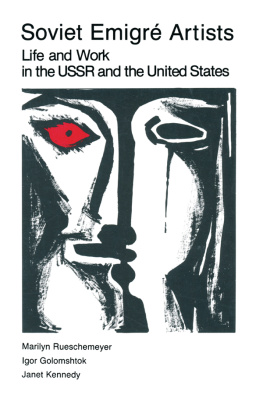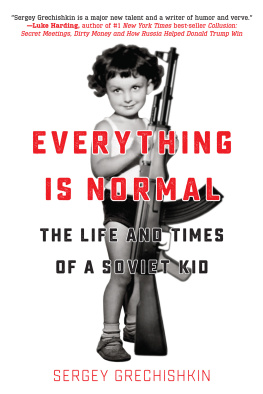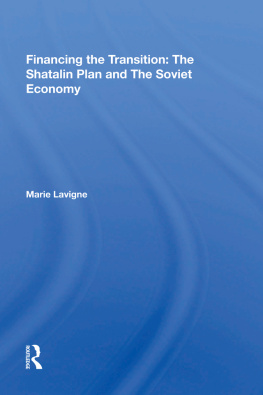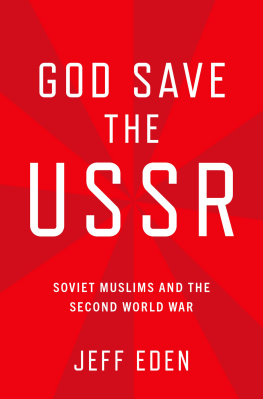Soviet Emigr Artists
Soviet Emigr Artists
Life and Work
in the USSR and the United Statess
Marilyn Rueschemeyer Igor Golomshtok Janet Kennedy
First published 1985 by M.E. Sharpe
Published 2015 by Routledge
2 Park Square, Milton Park, Abingdon, Oxon OX14 4RN
711 Third Avenue, New York, NY 10017, USA
Routledge is an imprint of the Taylor & Francis Group, an informa business
Copyright 1985 Taylor & Francis. All rights reserved.
No part of this book may be reprinted or reproduced or utilised in any form or by any electronic, mechanical, or other means, now known or hereafter invented, including photocopying and recording, or in any information storage or retrieval system, without permission in writing from the publishers.
Notices
No responsibility is assumed by the publisher for any injury and/or damage to persons or property as a matter of products liability, negligence or otherwise, or from any use of operation of any methods, products, instructions or ideas contained in the material herein.
Practitioners and researchers must always rely on their own experience and knowledge in evaluating and using any information, methods, compounds, or experiments described herein. In using such information or methods they should be mindful of their own safety and the safety of others, including parties for whom they have a professional responsibility.
Product or corporate names may be trademarks or registered trademarks, and are used only for identification and explanation without intent to infringe.
Library of Congress Cataloging in Publication Data
Rueschemeyer, Marilyn, 1938
Soviet emigre artists.
Bibliography: p.
1. Artists, ExpatriateUnited StatesInterviews. 2. ArtistsSoviet UnionInterviews. 3. Artists, JewishUnited StatesInterviews. 4. ArtistsSocial conditionsUnited States. 5. ArtistsEconomic aspectsUnited States. 6. Art and SocietyUnited States. I. Golomshtok, Igor. II. Kennedy, Janet, 1948.
III. Title.
N6536.R8 1985 704.03924073 84-23558
ISBN 0-87332-296-7 (cloth)ISBN 0-87332-810-8 (paper)
Design by Sophie Schiller.
ISBN 13: 9780873328104 (pbk)
ISBN 13: 9780873322966 (hbk)
This book is dedicated to Dietrich and Nina,
to Nikita A.,
and to the memory of Bella and Julius
Contents
Marilyn Rueschemeyer
Igor Golomshtok
Marilyn Rueschemeyer
Janet Kennedy
Marilyn Rueschemeyer
This book could not have been written without the interest and generosity of the Soviet emigr artists, art historians, and critics who agreed to be interviewed. With warmth and courteousness, they spent hours answering questions, assessing their experiences in the Soviet Union and recalling the chaos, tribulations, and excitement of their first years in the United States. Among the artists who contributed so much to this project are Katerina Arnold, Vagrich Bakhchanyan, Paul Bunin, Mikhail Chemiakin, Rimma and Valery Gerlovin, Vladimir Grigorovitch, Henry Khudyakov, Marc Klionsky, Vitaly Komar, Alexander Kosolapov, Alexander Melamid, Lev Meshberg, Ernst Neizvestny, Alexander Ney, Gregory Perkel, Alexander Prostakov, Vladimir Ryklin, Sophie Schiller, Zarina Sheglov, Ilya Shenker, and Igor Tulipanov. We are grateful to John Bowlt, Norton Dodge, Larissa Haskell, and Alison Hilton for their help and inspiration and to Alexander Glezer, Margarita Tupitsyn, Eduard Nakhamkin, Ronald Feldman, Rowman Kaplan, and the staffs of the Galerie St. Etienne and the Lefebre Gallery for their cooperation and advice. We thank Robert Thornton of the Rhode Island School of Design Museum for his help in reproducing one of the artists prints, and Sue Carroll for her excellent typing of part of the manuscript and for her reactions as an American artist. Our editor, Patricia Kolb, offered her enthusiasm, helpful criticism, and patience from the very beginning of our work together at M. E. Sharpe, for which we are most appreciative.
Igor Golomshtok and I are enormously grateful to both our familiesto Nina and Dietrich, Benjamin, Julia, and Simonefor their toleration of long conversations and meetings over the years, for their participation in gatherings with emigr artists, and for partaking in the spirit of this project, in which we all became so intensely involved.
Finally, it seems important to mention that the authors of this book grew up in very different social and political milieux and were informed by different professional traditions. Through intense discussion, correspondence, and joint meetings with some of the respondents, we brought our varying perspectives together to help us gain a deeper understanding of the lives of Soviet artists. We sought to integrate our observations and analyses, but we also gave each other the space, and respect, for individual assessment.
MARILYN SCHATTNER RUESCHEMEYER
Providence, Rhode Island
Marilyn Rueschemeyer
Since 1970 approximately one hundred thousand citizens of the Soviet Union have emigrated to the United States. Among them are as many as a hundred painters and sculptors who came to New York with great hopes and expectations for their lives and careers as artists in American society.1 This book is a record of their experiences. It is based on the reflections of the artists themselves as well as on the impressions of gallery owners and managers, art historians and critics who are familiar with the system of art in the Soviet Union and have known artists there or worked with them after emigration.2
Exploring the lives and the work of these artists, as they make the transition from the social and cultural world of the Soviet Union to our own very different one, can tell us much about these two societies as seen from the particular perspectives of our respondents. It also reveals important aspects of art itselfits rooting in human experience and its relation to the social, political, and cultural milieux in which it is created. The act of emigration, because of its radically disruptive character, throws a strong and peculiar light on the culture and society these artists left behind, on their new host country, and on the ways in which art is grounded in a social setting. These are the major themes we will address in this book. They are embedded in individual stories about mundane issues such as where to live, how to exhibit, and what financial risks to take. At the same time they are often the subject of conscious reflection and discussion, for concern with the underlying questions of ones existence is the lot of the uprooted. Some experience this as a burden, others as a gift.
First, however, we need more information on who these artists are and how they fit into the over-all emigration from the Soviet Union in the 1970s.
Who Are the Emigrs?
Of the roughly 300,000 people who have emigrated from the Soviet Union since 1970, most are Jewishabout 248,000. Among the others who have been allowed to leave are about 50,000 Germans and 8,000 Armenians,3 as well as selected members of the intelligentsia of every ethnic background. Of the artists who are the subject of this book, some call themselves half Jewish and some are drawn to Christian beliefs. Still, the typical pattern is that at least one member of the emigr family is identifiable as a Jew, because such identification was generally necessary for obtaining permission from the Soviet authorities to emigrate to Israel, the official destination of most Soviet emigrants and the one originally fought for by Soviet citizens who wanted to pursue and deepen their Jewish commitments.










